Made In China @ Hua Song Muesum
Haw Par Villa
262 Pasir Panjang Road
Singapore 11862
Tel: 67777819
 While a museum to most people is a boring place where you go to when u have nothing else better to do, I would go to this special one that not only reflects my ancestral roots, but culinary heritage too. No, I am not referring to our newly refurbished National Museum with its arty farty F&B outlets. Rather it's in a long forgotten place by many that used to be one of the exciting places for me during childhood. The museum I am referring to is Hua Song 华颂 and its in house restaurant Made in China. I had delay checking out this restaurant many times due to work, travel and other attractions but I kept hearing good comments about this place. It’s hard to find a good restaurant on the west side of Singapore but I my hopes were lifted after two visits within ten days coincidentally. The first occasion was the annual CNY dinner organized by the company’s recreation club and the second was for reunion dinner with my in-laws.
While a museum to most people is a boring place where you go to when u have nothing else better to do, I would go to this special one that not only reflects my ancestral roots, but culinary heritage too. No, I am not referring to our newly refurbished National Museum with its arty farty F&B outlets. Rather it's in a long forgotten place by many that used to be one of the exciting places for me during childhood. The museum I am referring to is Hua Song 华颂 and its in house restaurant Made in China. I had delay checking out this restaurant many times due to work, travel and other attractions but I kept hearing good comments about this place. It’s hard to find a good restaurant on the west side of Singapore but I my hopes were lifted after two visits within ten days coincidentally. The first occasion was the annual CNY dinner organized by the company’s recreation club and the second was for reunion dinner with my in-laws.


Hua Song is a museum dedicated to recognize the hardships, lives and achievements of overseas Chinese during the last two centuries. From the journey of passage to settling down in new settlements across the globe, it depicted the lives and jobs taken on by Chinese migrants in their newly adopted countries together with their sufferings and achievements. The museum is divided into 4 areas with 3 of them doubling up as private dinning rooms for Made in China. The smallest private dinning room is also dedicated to exhibits featuring the success of overseas Chinese in showbiz like the legendary Bruce Lee. Another private dining hall is in the focus of traditional Chinese recipes and foods enjoyed by the different dialect groups in Singapore. It even features a mock up of a typical Chinese kitchen in a pre World War II shop house unit.
The largest private dinning area is also known as the clan hall which houses the memorabilia of the different Chinese clans, associations and their activities. The main dinning hall is adjacent to the library that houses many books about the Chinese heritage, culture, cuisine and achievements.
 My first tasting was done with a pre selected set menu. The opening was led by the usual Fa Cai Yu Sheng. While the sauces, condiments and radishes were pretty standard, what made the dish stand out from the previous Lo Hei’s that I had attended was the freshness of the fish. Quality pieces of thinly sliced chilled not frozen salmon captured my attention to the smooth texture contrasting against the crunch and crisp textures of the vegetables and condiments. So fresh it was, I could take it without pairing with any of the condiments. It was also a hit with my wife N and her folks in the second time I tasted it again.
My first tasting was done with a pre selected set menu. The opening was led by the usual Fa Cai Yu Sheng. While the sauces, condiments and radishes were pretty standard, what made the dish stand out from the previous Lo Hei’s that I had attended was the freshness of the fish. Quality pieces of thinly sliced chilled not frozen salmon captured my attention to the smooth texture contrasting against the crunch and crisp textures of the vegetables and condiments. So fresh it was, I could take it without pairing with any of the condiments. It was also a hit with my wife N and her folks in the second time I tasted it again. From the two visits, I had also tasted two different types of soups, one thick and their other a steamed clear broth. The thick soup was a light puree of pumpkin with a chockfull of other ingredients like fishmaw, crabmeat, sharks fins, mushrooms and bamboo shoots. The generosity of the ingredients made me feeling less of eating a starch thicken broth though it created confusion of what was going into the mouth. Nevertheless it reflects well of the chef where most of the time others would always try to cut corners by giving more starchy broth.
From the two visits, I had also tasted two different types of soups, one thick and their other a steamed clear broth. The thick soup was a light puree of pumpkin with a chockfull of other ingredients like fishmaw, crabmeat, sharks fins, mushrooms and bamboo shoots. The generosity of the ingredients made me feeling less of eating a starch thicken broth though it created confusion of what was going into the mouth. Nevertheless it reflects well of the chef where most of the time others would always try to cut corners by giving more starchy broth. Between the two soups, I preferred the clear broth which was Steamed Top Shell with Dried Scallop and Huai Shan. The broth had the foundations of a good stock with rich meaty flavours and it was further enhance during preparation with dried scallop, ham, lean pork and the top shell. A light scattering of a few wolfberries give a subtle sweetness to the soup which was very pleasant.
Between the two soups, I preferred the clear broth which was Steamed Top Shell with Dried Scallop and Huai Shan. The broth had the foundations of a good stock with rich meaty flavours and it was further enhance during preparation with dried scallop, ham, lean pork and the top shell. A light scattering of a few wolfberries give a subtle sweetness to the soup which was very pleasant.  Most of the dishes in the set menu from the first tasting were the usual grub on banquet menus in wedding dinners. As they were rather predictable, what stirred my interest was how good some of them were done. The Crispy Skin Chicken was commendable with a nice contrast of the crisp skin against the juicy breast meat, rarely achievable in banquets due to volume. This can only be done with précised timing coordination between kitchen and service staff. From chopping up the chicken to the time it is served on the table, many factors can cause the taste of the dish to fail as such meat juices softening the crisp skin or over cooking the bird. Another dish I like was the Braised Sea Cucumber with Mushrooms and Spinach. The sea cucumbers were well braised with no fish odours. Biting into soft supple textures, this reflects the quality of the sea cucumbers used and the natural “puffing process” through rehydration in water for a week. Some chefs use bicarbonate of soda to speed up the process and enlarge the volumes of the soak sea cucumbers resulting in a poor texture when cooked. Sometimes this can cause the sea cucumbers just totally “disappear” into the sauce as the gelatinous mass breaks down when overcooked.
Most of the dishes in the set menu from the first tasting were the usual grub on banquet menus in wedding dinners. As they were rather predictable, what stirred my interest was how good some of them were done. The Crispy Skin Chicken was commendable with a nice contrast of the crisp skin against the juicy breast meat, rarely achievable in banquets due to volume. This can only be done with précised timing coordination between kitchen and service staff. From chopping up the chicken to the time it is served on the table, many factors can cause the taste of the dish to fail as such meat juices softening the crisp skin or over cooking the bird. Another dish I like was the Braised Sea Cucumber with Mushrooms and Spinach. The sea cucumbers were well braised with no fish odours. Biting into soft supple textures, this reflects the quality of the sea cucumbers used and the natural “puffing process” through rehydration in water for a week. Some chefs use bicarbonate of soda to speed up the process and enlarge the volumes of the soak sea cucumbers resulting in a poor texture when cooked. Sometimes this can cause the sea cucumbers just totally “disappear” into the sauce as the gelatinous mass breaks down when overcooked. Between the two fishes we had for both tastings, I preferred the Steamed Patin Fish for its lovely texture and well cooked topping of sautéed preserve radish (chye Por)with garlic. This gave a nice crunchy texture against the softness of the fish and a fragrant kick of flavours coming through from the chye por and garlic. However the Hong Kong Style Steamed Garoupa has its own merits too with a well balanced light superior soya sauce enhance by ginger and spring onions. What is really commendable is the finesse cutting of the spring onions is the testimony of a fine chef at work in the kitchen.
Between the two fishes we had for both tastings, I preferred the Steamed Patin Fish for its lovely texture and well cooked topping of sautéed preserve radish (chye Por)with garlic. This gave a nice crunchy texture against the softness of the fish and a fragrant kick of flavours coming through from the chye por and garlic. However the Hong Kong Style Steamed Garoupa has its own merits too with a well balanced light superior soya sauce enhance by ginger and spring onions. What is really commendable is the finesse cutting of the spring onions is the testimony of a fine chef at work in the kitchen. The Wasabi Prawns cast an indication of the Chef’s former experience in the Tung Lok Group of restaurants. Done in a very “Tung Lok” style with green coloured wasabi mayonnaise and sprinkling of diced fresh fruits, the taste of the taste was fine for me with the pungency of the wasabi at the right level and crisp potato starch dusted prawns without being over fried. What I don’t really agree with is the use green food colouring added to the mayonnaise which certainly does not enhance the appearance of the dish at all.
The Wasabi Prawns cast an indication of the Chef’s former experience in the Tung Lok Group of restaurants. Done in a very “Tung Lok” style with green coloured wasabi mayonnaise and sprinkling of diced fresh fruits, the taste of the taste was fine for me with the pungency of the wasabi at the right level and crisp potato starch dusted prawns without being over fried. What I don’t really agree with is the use green food colouring added to the mayonnaise which certainly does not enhance the appearance of the dish at all. One of the best dishes that we tasted was the Jing Du Pork Ribs. Beautifully executed with just the right amount of sauce, the meaty pork ribs were not over tenderized with bicarbonate of soda and tasted very good with the fruity sweet and sour sauce that glazes it. What made this dish a success in my terms was the decent meat to bone ratio, a tangy sauce that cuts the fattiness of the meat and a nice thin crispy crust that not only provided texture, but helped to catch a decent coating of the lovely sauce.
One of the best dishes that we tasted was the Jing Du Pork Ribs. Beautifully executed with just the right amount of sauce, the meaty pork ribs were not over tenderized with bicarbonate of soda and tasted very good with the fruity sweet and sour sauce that glazes it. What made this dish a success in my terms was the decent meat to bone ratio, a tangy sauce that cuts the fattiness of the meat and a nice thin crispy crust that not only provided texture, but helped to catch a decent coating of the lovely sauce. A house specialty dish not to be missed here is the Home Made Emerald Tofu with Nameko Mushrooms Topping. It's one the Chef’s signature dish where deep fried home made egg tofu is pair with delicious sauce with Nameko mushrooms as a key ingredient. The home made tofu had a velvety smooth texture with a heart warming delicate softness. Deep fried to a golden brown, the tofu rested on a bed of quick sautéed spinach as the earthy mushroom flavoured topping crowned the glistening tofu cubes.
A house specialty dish not to be missed here is the Home Made Emerald Tofu with Nameko Mushrooms Topping. It's one the Chef’s signature dish where deep fried home made egg tofu is pair with delicious sauce with Nameko mushrooms as a key ingredient. The home made tofu had a velvety smooth texture with a heart warming delicate softness. Deep fried to a golden brown, the tofu rested on a bed of quick sautéed spinach as the earthy mushroom flavoured topping crowned the glistening tofu cubes. As it was the fifteenth day of the lunar year for the second tasting, naturally the ideal dessert should be tang yuan or glutinous rice dumplings as a mark of reunion. Ours came stuffed with black sesame paste and rolled in a fine mill of ground toasted peanuts.The finesse part of this dessert lie in the thin pastry skin made with glutinous rice flour which made the fragrant stuffing evening more outstanding.In summary, the dishes presented at Made in China are down to earth favourites reflecting the various traditional cuisine heritages of different Chinese dialect groups. What made them stand out is not the novelty of the dish but the finesse in the preparation of each one. The unique dinning environment is a novelty with the right ambience and music, an important criterion for my passionate musician wife N.
As it was the fifteenth day of the lunar year for the second tasting, naturally the ideal dessert should be tang yuan or glutinous rice dumplings as a mark of reunion. Ours came stuffed with black sesame paste and rolled in a fine mill of ground toasted peanuts.The finesse part of this dessert lie in the thin pastry skin made with glutinous rice flour which made the fragrant stuffing evening more outstanding.In summary, the dishes presented at Made in China are down to earth favourites reflecting the various traditional cuisine heritages of different Chinese dialect groups. What made them stand out is not the novelty of the dish but the finesse in the preparation of each one. The unique dinning environment is a novelty with the right ambience and music, an important criterion for my passionate musician wife N.




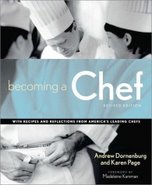
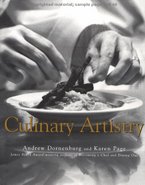


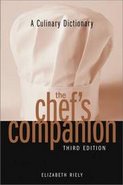

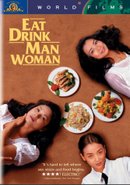
.jpg)






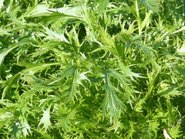
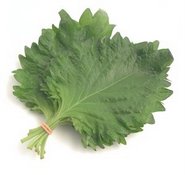


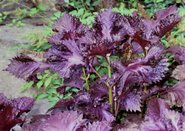
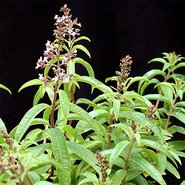
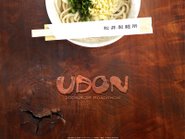





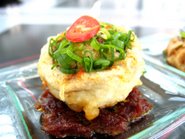


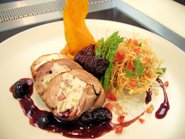
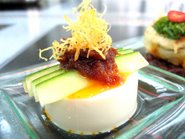
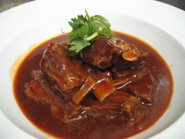
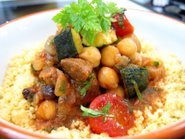
























































No comments:
Post a Comment